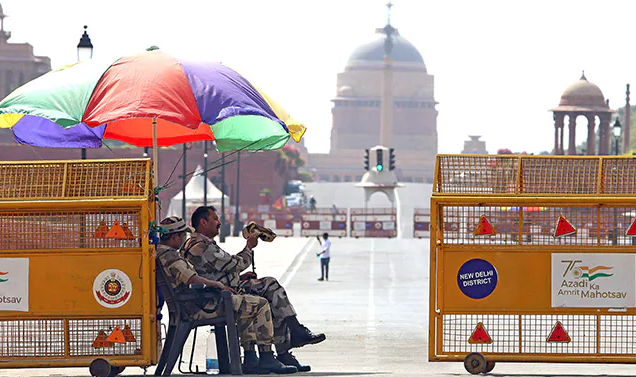As the summer sun beats down relentlessly, Delhiites are feeling the heat, quite literally. This Monday marked a sizzling milestone as the national capital experienced its second-highest maximum temperature, soaring a staggering 3.7 degrees above the normal mark.
Najafgarh took the lead, recording a blistering 47.4 degrees Celsius, closely followed by Mungeshpur at 47.1 degrees. Other areas didn’t fare much cooler, with Aya Nagar hitting 45.7 degrees, Pusa at 46.1 degrees, Pitampura recording 46.6 degrees, and Palam notching 45.2 degrees. It’s scorching out there!
The intense heatwave isn’t just discomforting; it’s a genuine concern, particularly for vulnerable communities. Low-income households, often lacking adequate access to water and cooling, find themselves particularly strained. Even routine tasks become endurance tests for those who must brave the outdoors for work and chores.
In response to the oppressive heat, the Directorate of Education in Delhi has mandated an early start to summer vacation for all government schools, spanning from May 11 to June 30. However, concerns arose as some government-aided and recognized private schools continued to operate despite the ongoing severe heatwave. A circular promptly advised all such schools to initiate summer vacations immediately.
The soaring temperatures have also put immense pressure on the city’s power grid, with real-time data from the State Load Dispatch Centre revealing a peak demand of 7,572 MW – the highest-ever for Delhi in May. This surpasses last year’s peak demand of 7,438 MW recorded in August.
It’s not just humans feeling the burn; animals too are bearing the brunt of the sweltering conditions. Delhi’s National Zoological Park has ramped up its animal care measures, providing water coolers, straw shelters, fruit ice balls, and other amenities to ensure the well-being of its residents.
The India Meteorological Department (IMD) has issued warnings of heatwave conditions prevailing in many parts of Delhi, with severe heatwave conditions in certain areas. The forecast also includes strong surface winds ranging from 25 to 35 kmph.
As the mercury continues to rise, the IMD emphasizes the importance of staying cool and hydrated. Heat-related illnesses pose a significant risk, especially to vulnerable groups such as infants, the elderly, and individuals with chronic conditions. Their advice? Keep hydrated, avoid prolonged exposure to heat, and stay indoors when possible.
So, as Delhiites brace themselves for more scorching days ahead, it’s essential to take precautions, stay cool, and look out for one another amidst this relentless heatwave. Stay safe, stay hydrated, and stay cool, Delhi!

